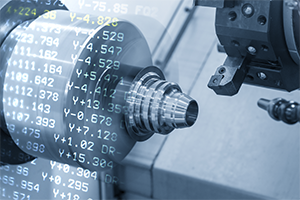Wizata's Lead Data Engineer about the power of artificial intelligence
Manufacturing data are measured variables that when collected and analyzed can improve your production processes. With prescriptive analytics, Wizata enables you not only to predict the future of your production, but to determine the best actions to reach your goals and make better informed decisions. We’ve asked Ziad Benslimane, our Lead Data Engineer, to answer frequent questions about data in the context of artificial intelligence in the manufacturing industry.
Could you summarize the process from data to insights?
We start by setting a specific business goal with our client and its teams, and begin collecting quality evidence that can guide us towards answers. We do this by checking available data sources, gathering pertinent data and uploading it to the Azure cloud.
A typical mistake is thinking that you need a centralized, clean and large amount of data. In fact, combining modern tools and our expertise enables us to clean the data, transform it and ensure its quality to begin analysis. Our data scientists can then take the helm and focus on using advanced machine learning techniques and data science to research and provide concrete answers to the business issue such as finding a root cause issue or deploying a prescriptive analytics solution.
Where is the data obtained from?
Data can be drawn from a variety of sources, including sensors, ERP, records from operators (e.g.: defects on the product), and external data sets such as weather data.
How should you start if you don't record data? What to measure and what to ignore?
Wizata combines partnerships with OSIsoft, expert in sensor monitoring, and Microsoft, recognized for its vision and advanced technologies. We’re therefore able to guide our clients through the whole process: from the capture of data on sensors, to the storage on the cloud and finally to the AI phase using advanced machine learning. Depending on the business case, the AI project scope and following discussions with people on the factory floor, we can advise on which data to collect to begin experimenting.
Should we record every data? At which granularity?
It all depends on the business case. Sometimes collecting raw data every second isn’t worth it. But all sources of data, raw or transformed, can be stored cheaply in a data lake. We use Azure Data Lake to store all data before refining it and storing it in Azure SQL Data Warehouse, in specific SQL databases or in other formats.
Should data be recorded and available in real time?
This is necessary when you want to analyze production in real time to optimize it straightaway. In the case of prescriptive analytics, you need data in real time for the machine learning algorithms to suggest the best actions at the right moment. This is a crucial step for the factory to adopt a data-driven manufacturing workflow.
What should you do next if you're already collecting operational data?
To determine a direction to aim for, you should evaluate the practicability of your ideas during an exploratory workshop as soon as possible. This enables you to determine the quality of your data and its sufficiency in volume to tackle your business challenges.
Let's talk
Are you ready to embark towards an Industry 4.0 future and adopt a data-driven strategy? Contact our experts to talk about your project via info@wizata.com and check our exploratory workshop.
The manufacturing industry is primed for AI, with disrupting innovations such as prescriptive analytics and global, holistic optimizations. Be sure to check our experts' recommendations on how to drive an AI project to get fast, impressive and inexpensive results.


